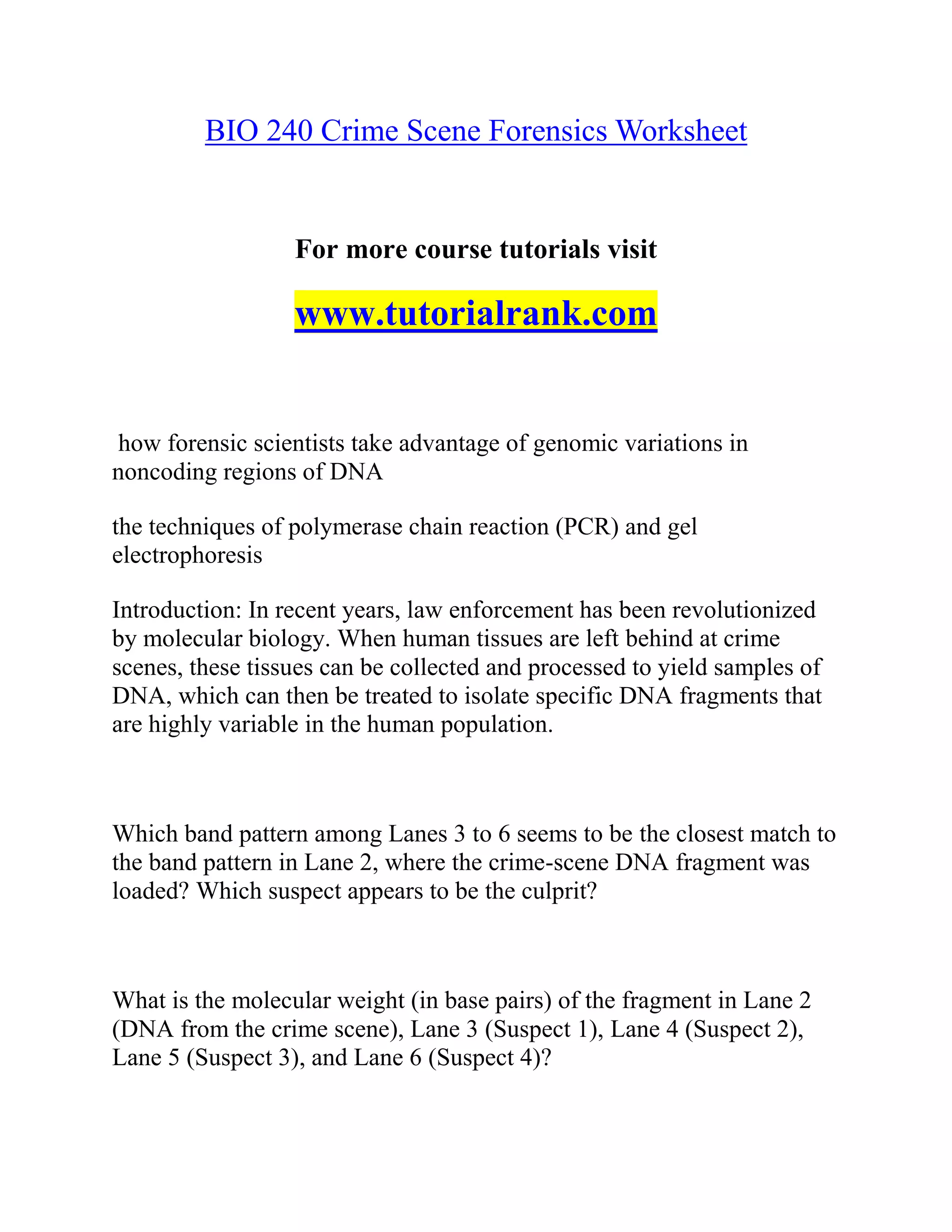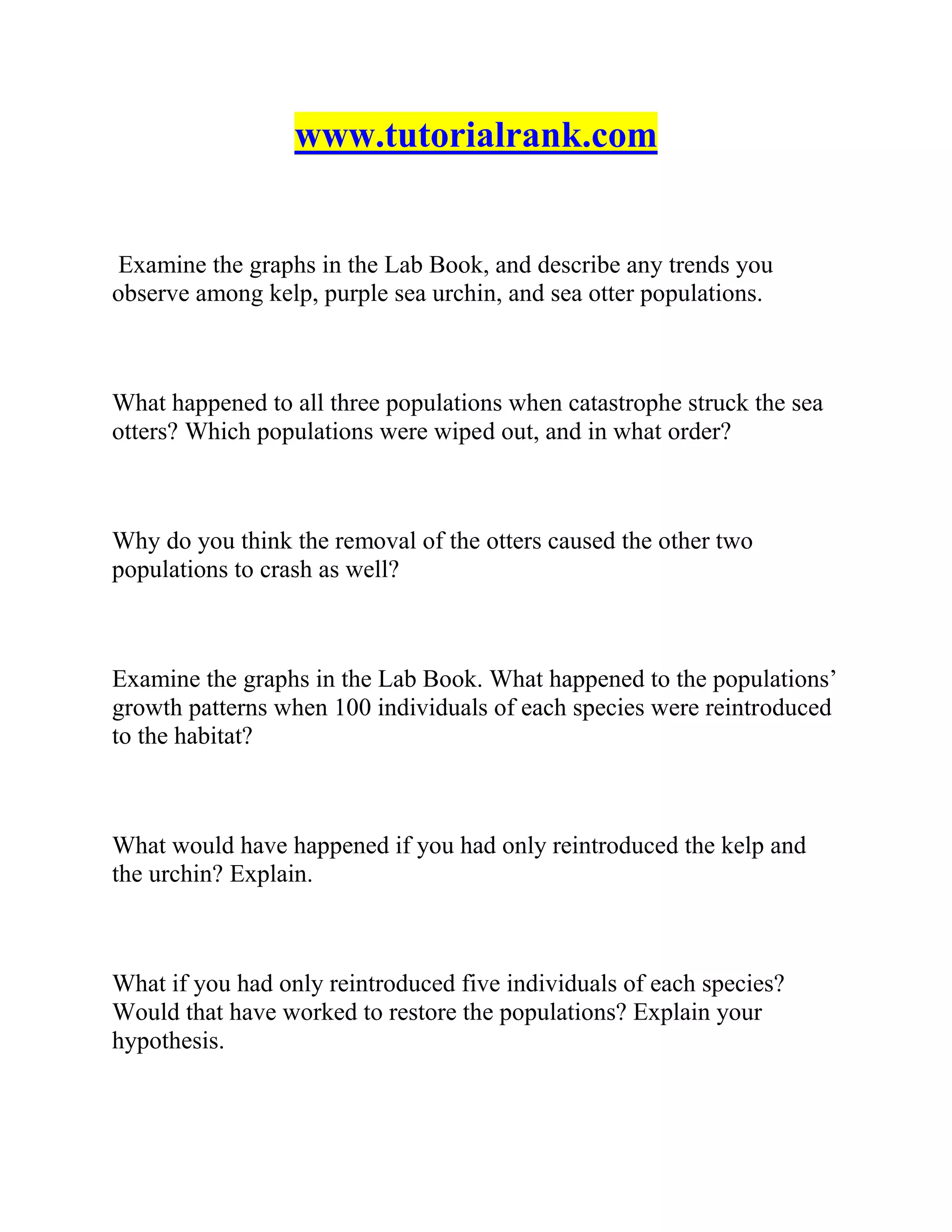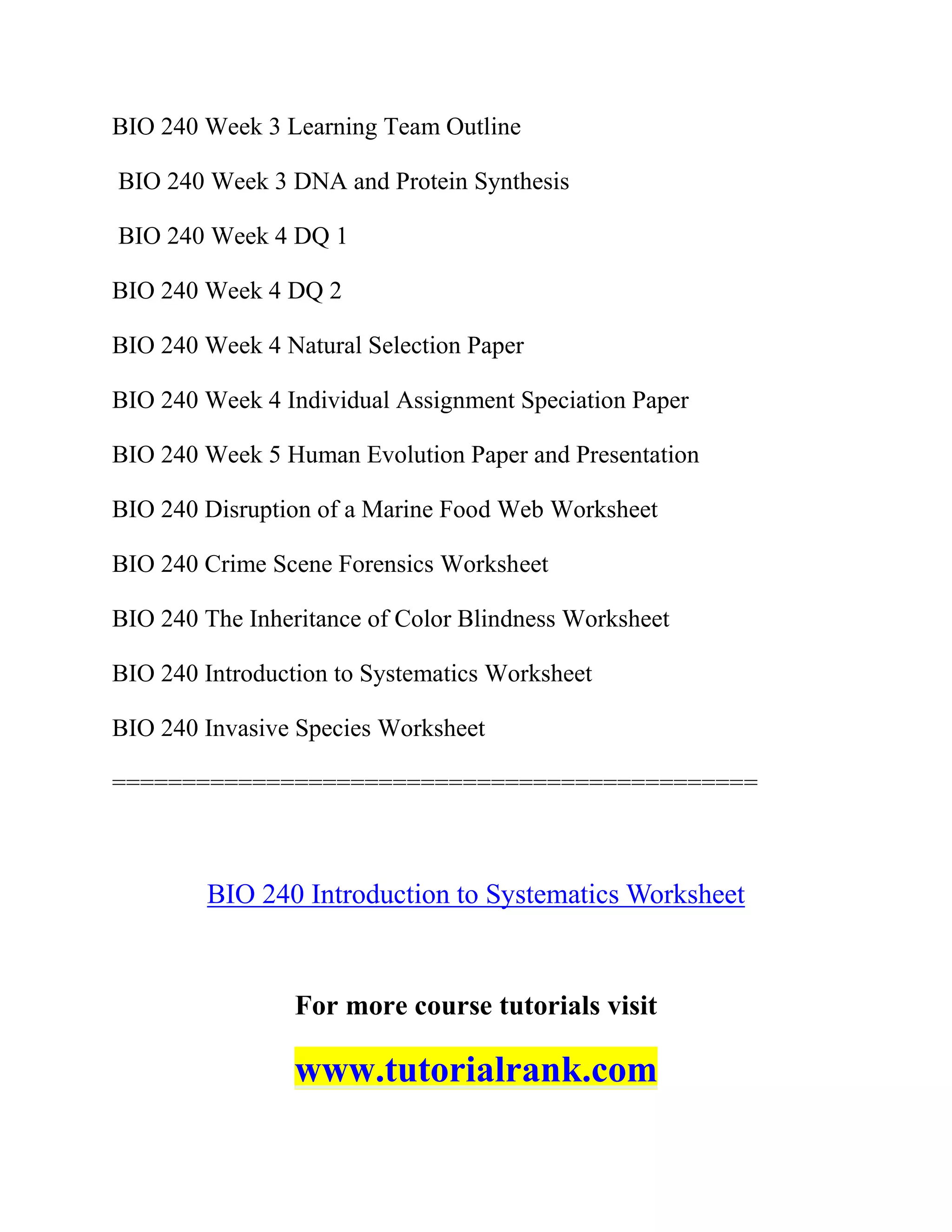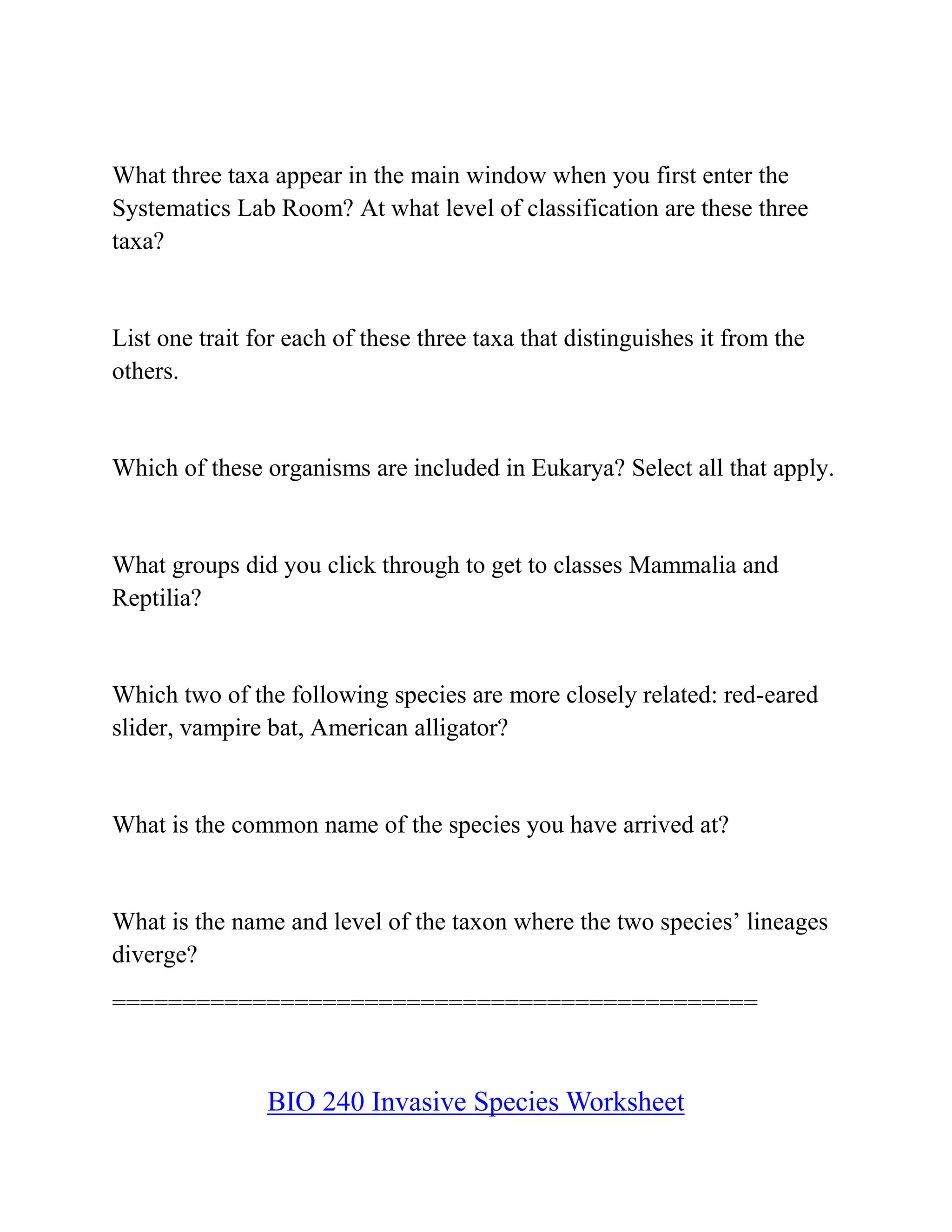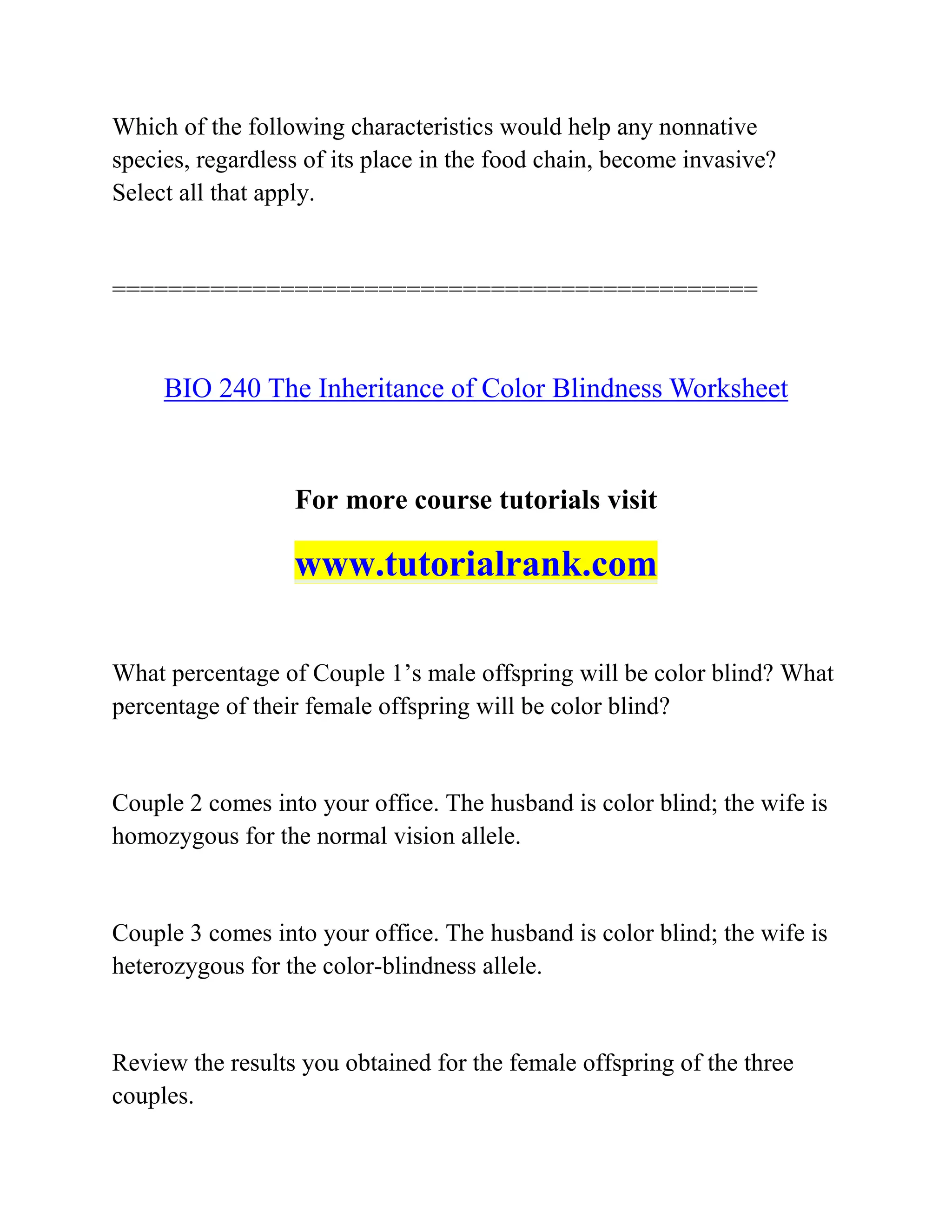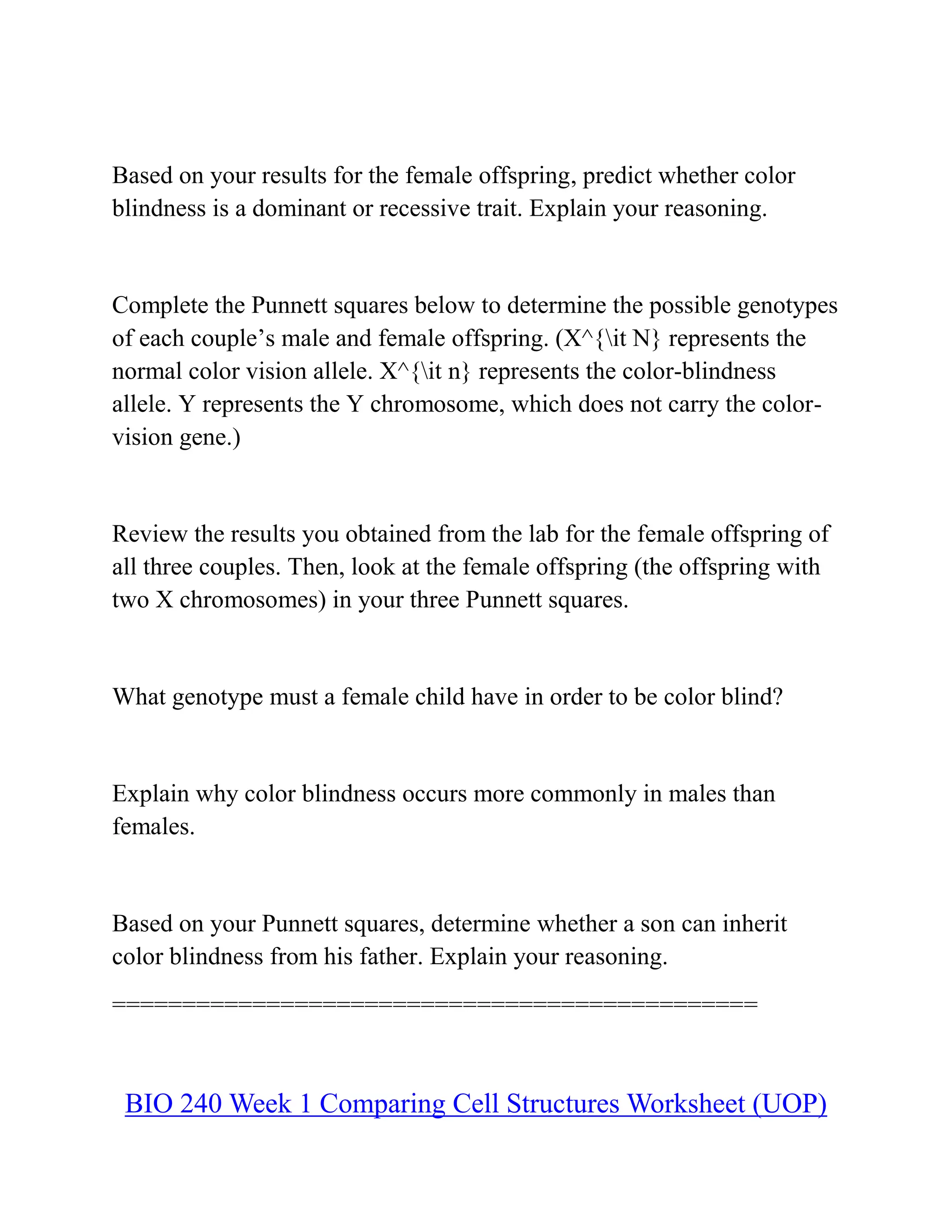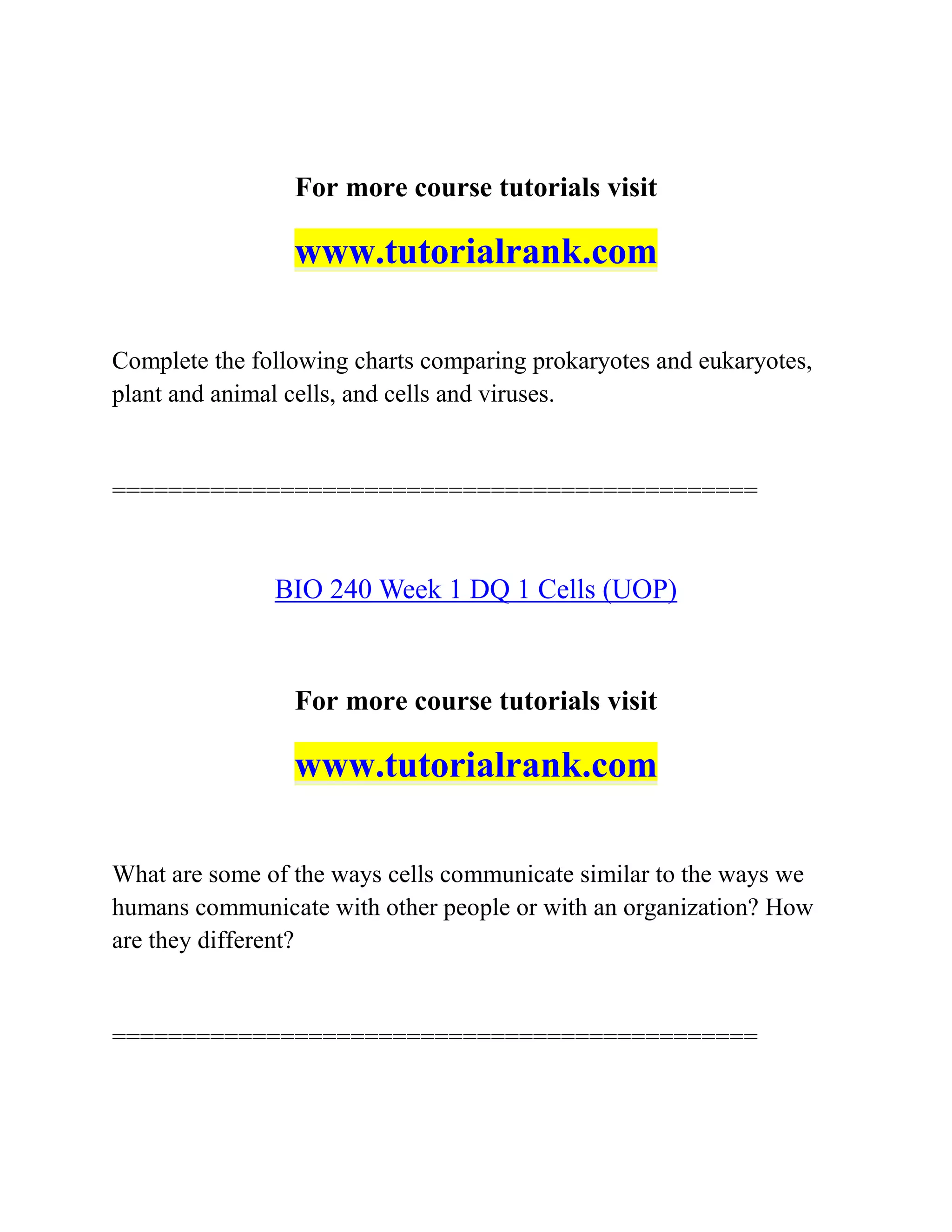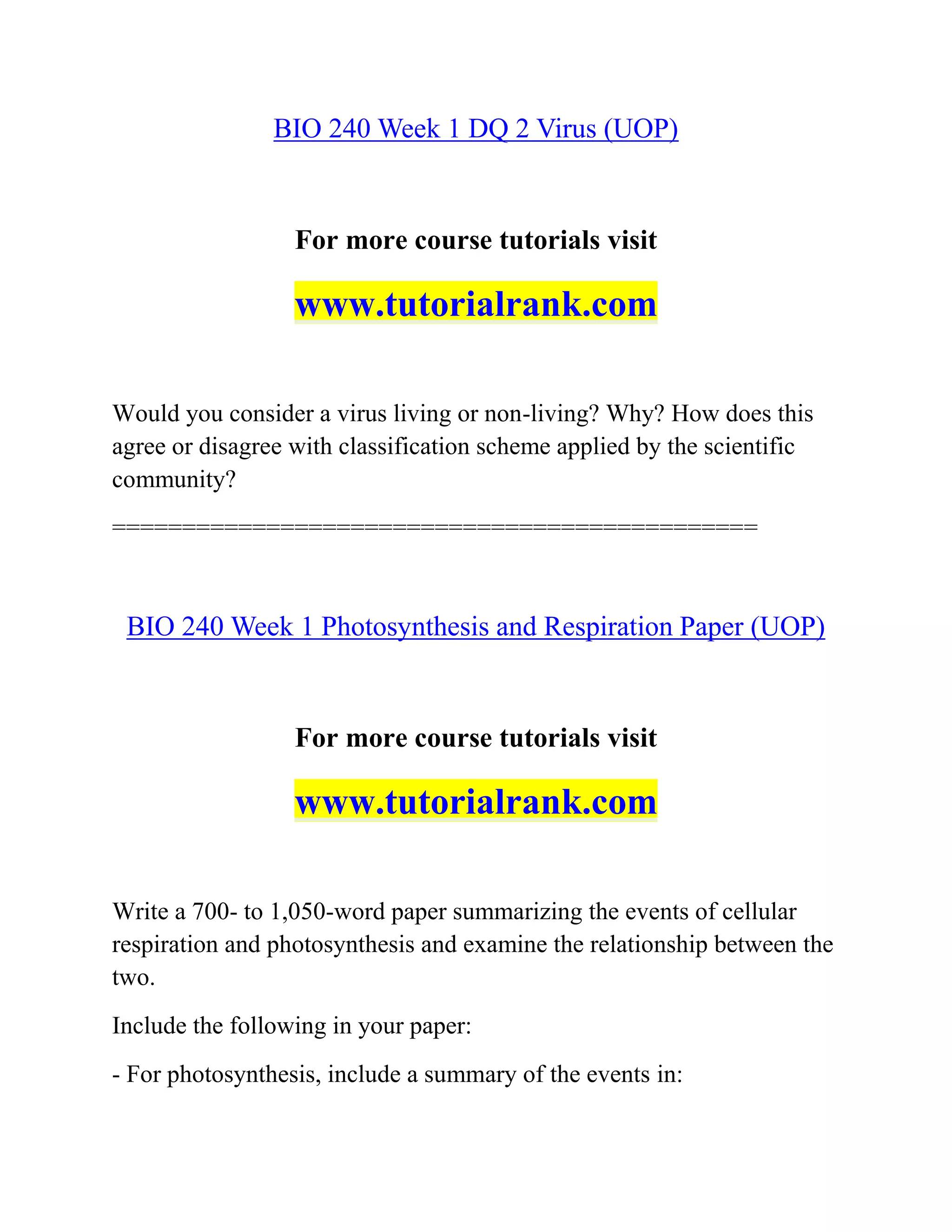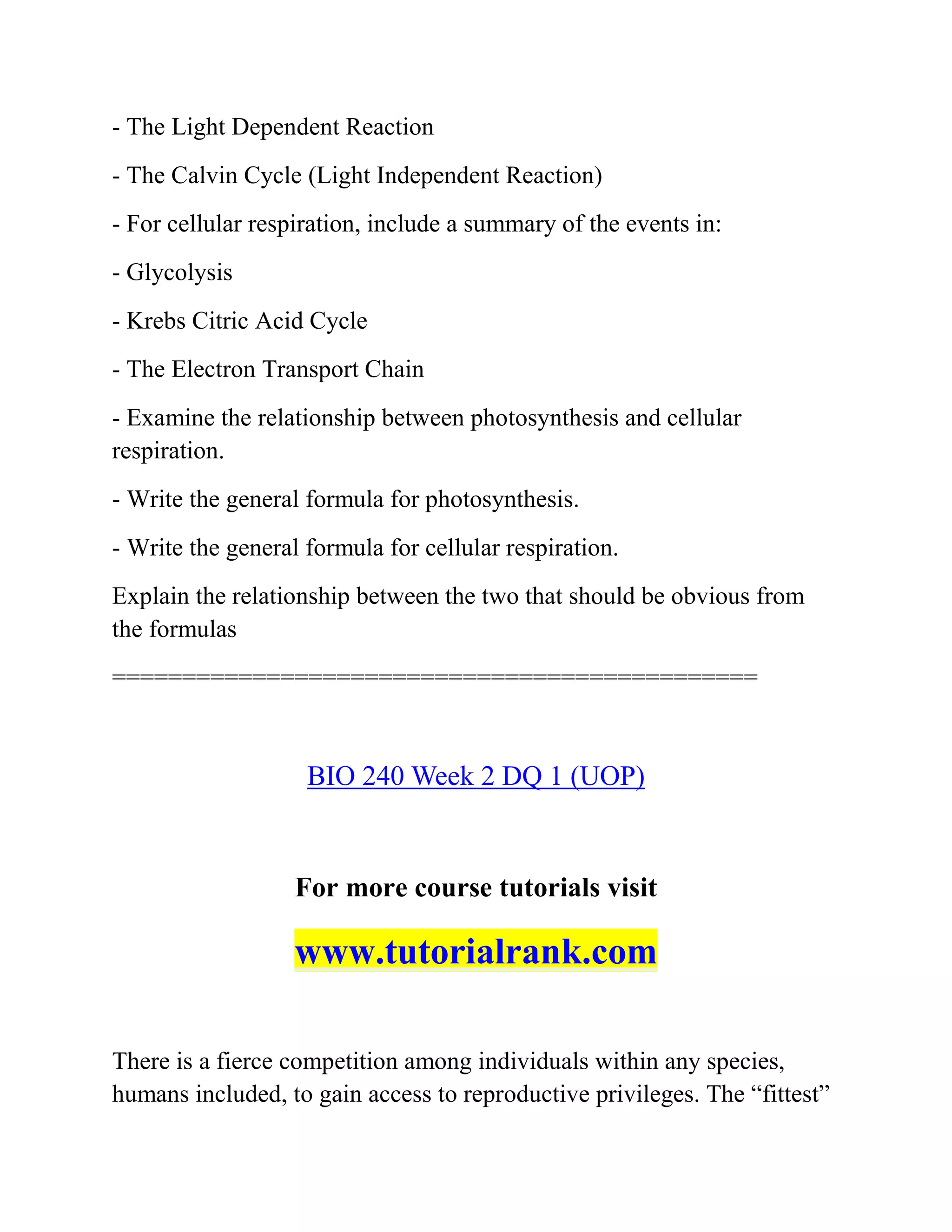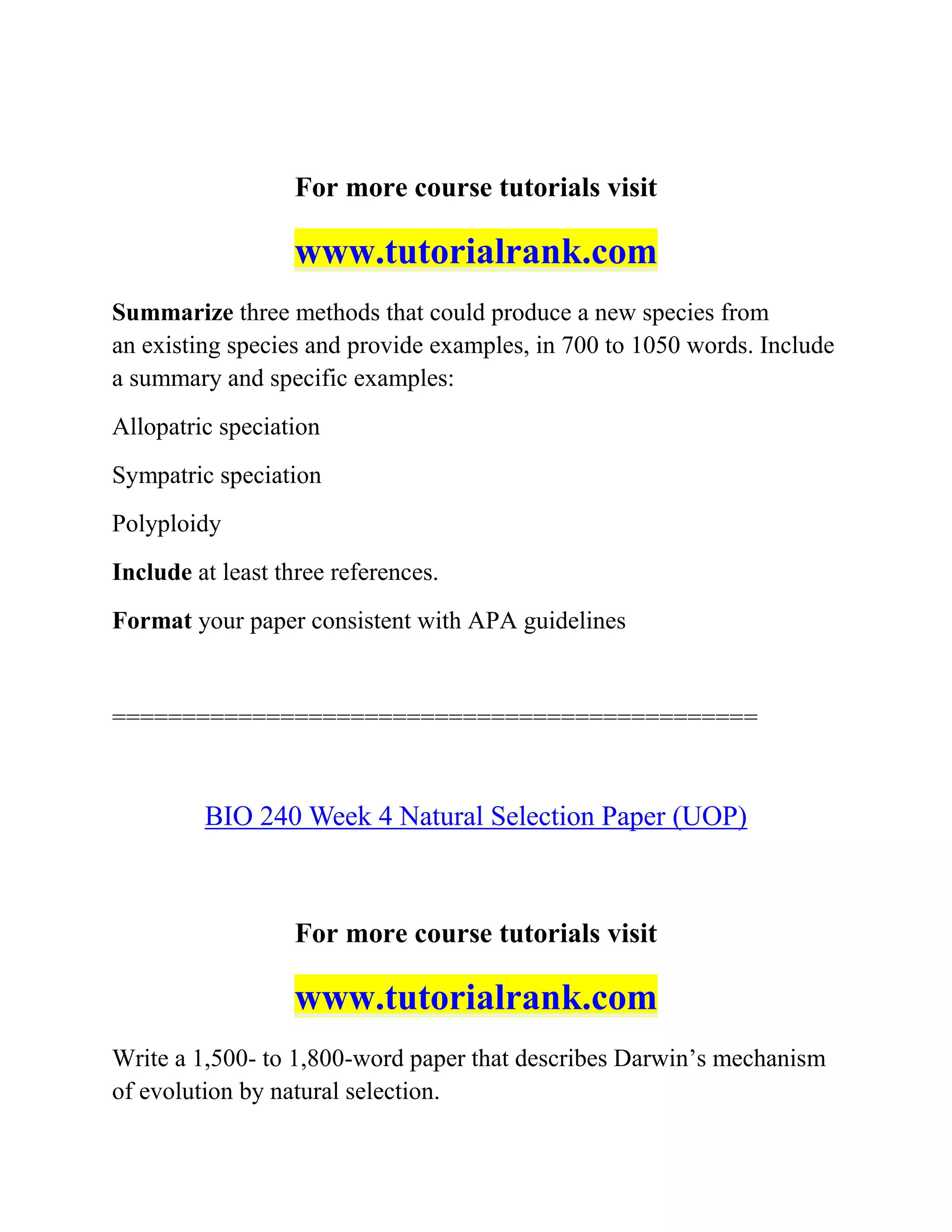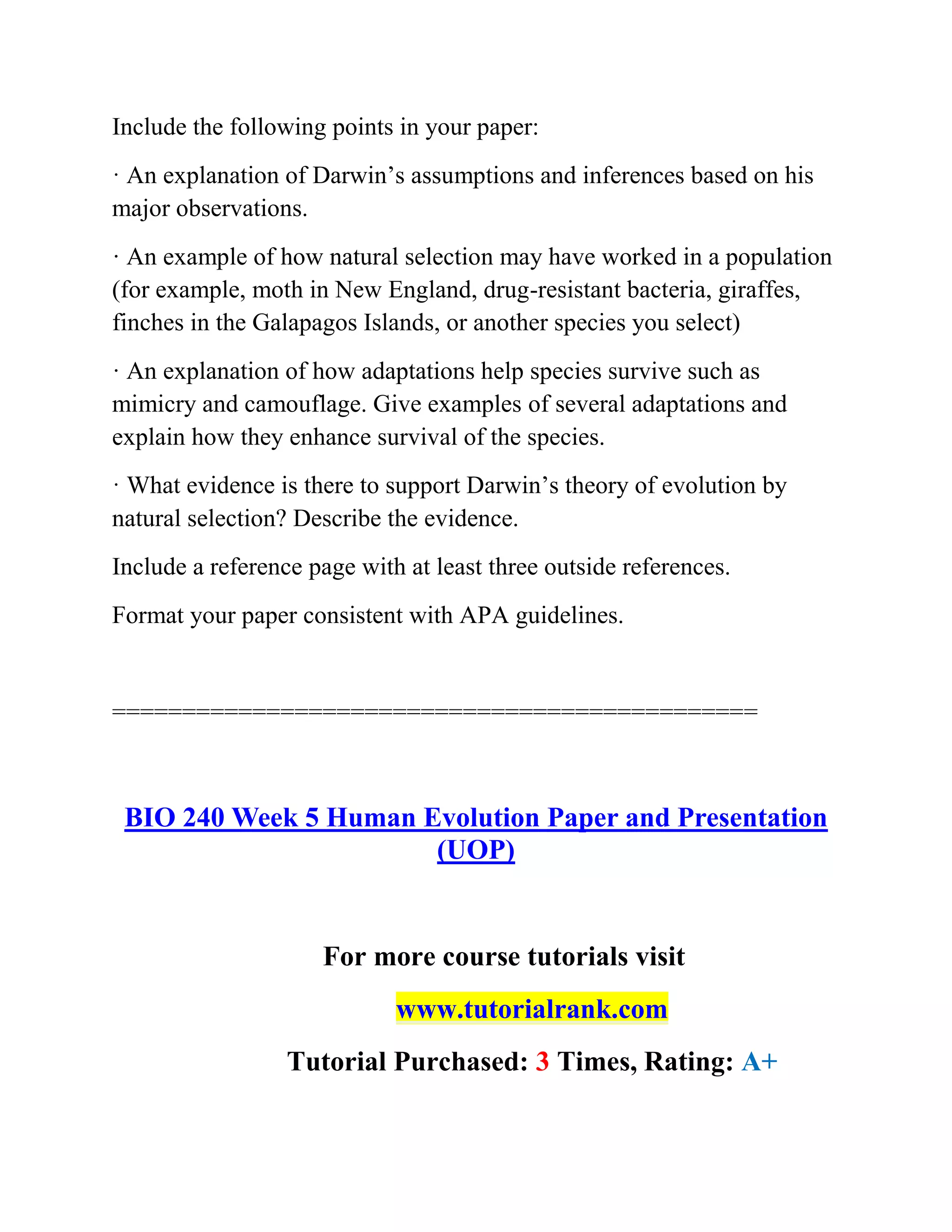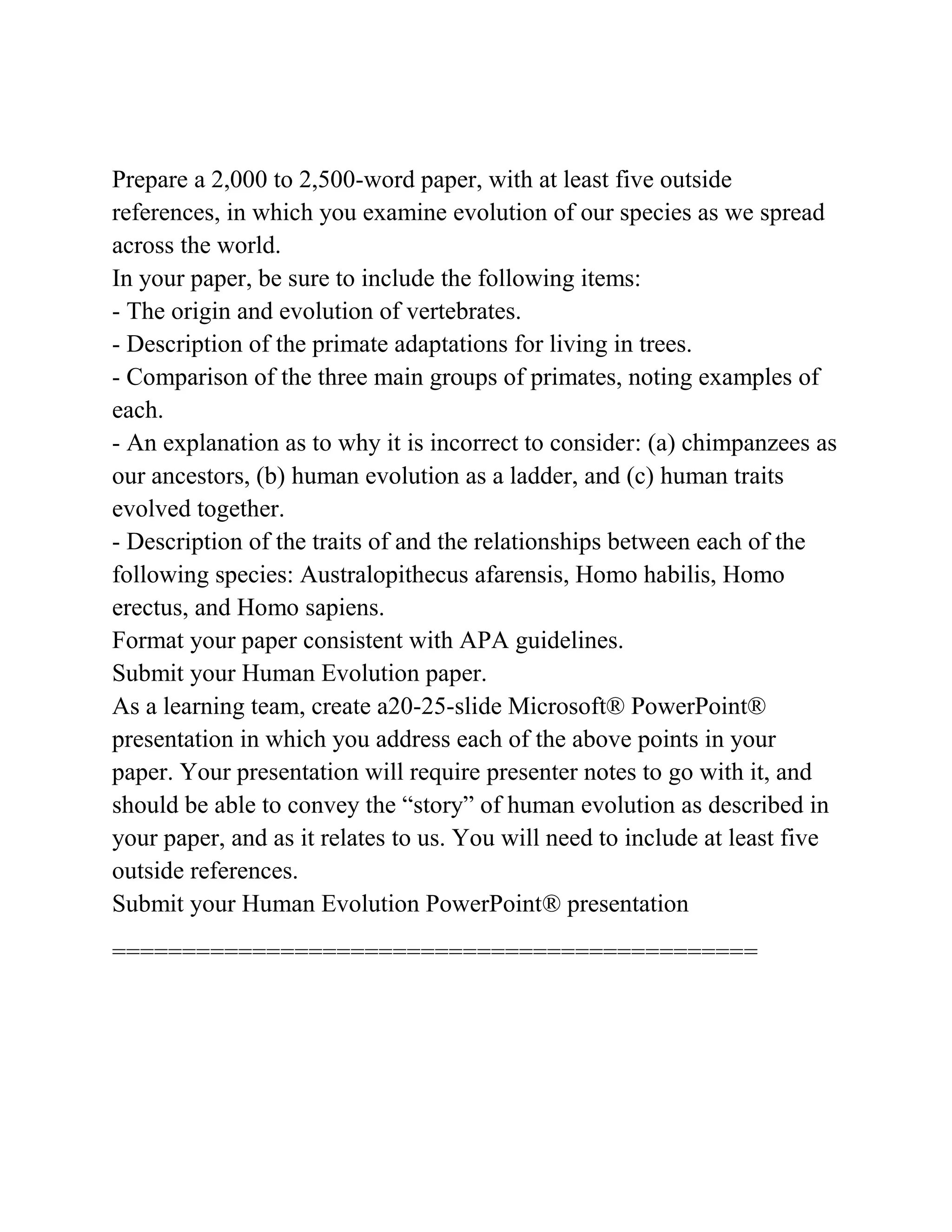The document contains various worksheets and assignments related to bio 240, covering topics such as crime scene forensics, marine food web disruptions, color blindness inheritance, systematics, invasive species, evolution, and natural selection. It includes detailed questions and tasks aimed at analyzing genetic, ecological, and evolutionary concepts through practical and theoretical frameworks. The homework emphasizes the application of biological principles to real-world scenarios and the importance of genetic profiling in forensics and ecosystem management.
